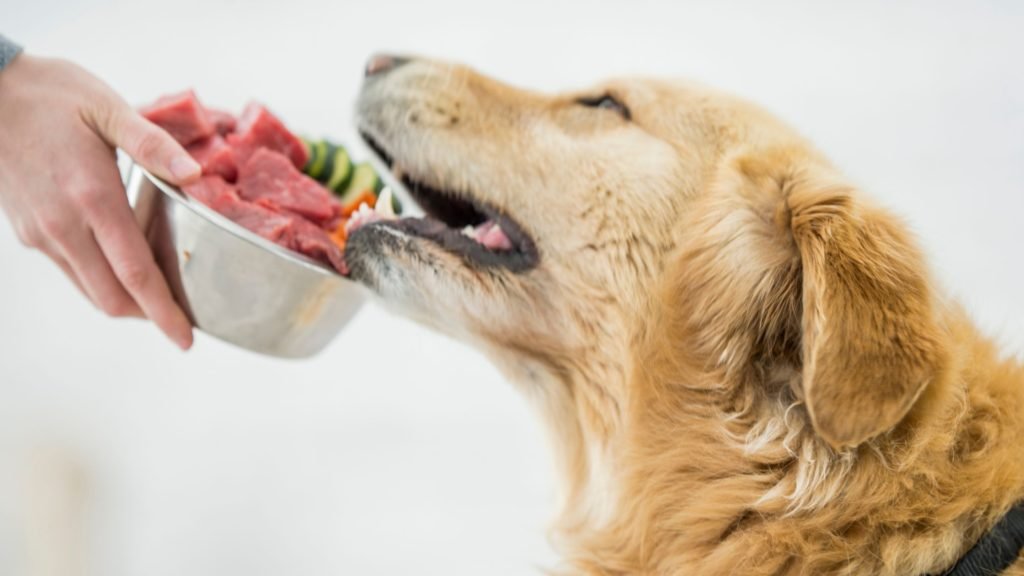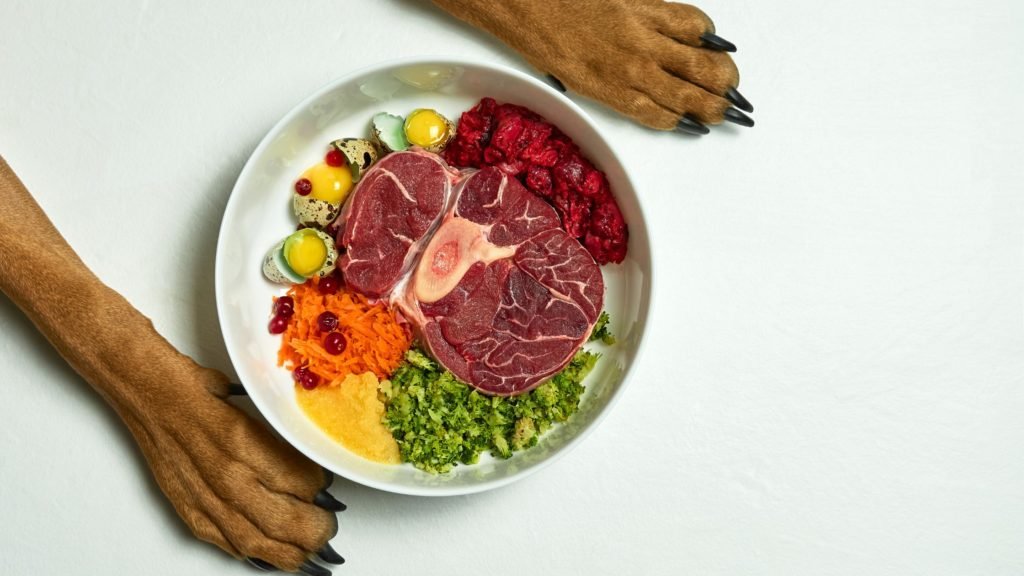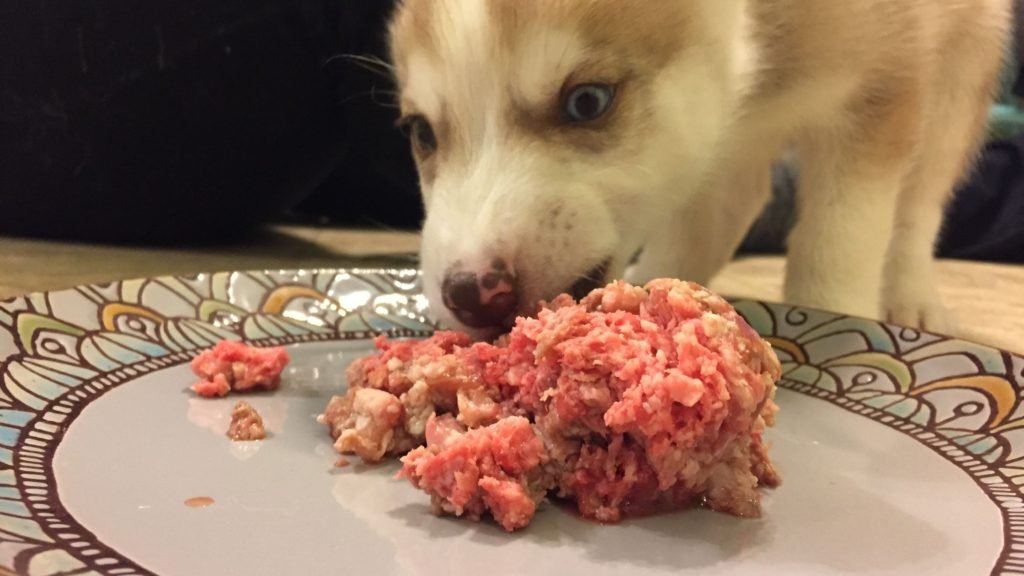Have you ever wondered, “When can I start raw feeding my puppy?” This is a common question for new and seasoned dog owners venturing into raw diets for their canine companions. Raw feeding, the Biologically Appropriate Raw Food (BARF) diet, has become increasingly popular due to its perceived health benefits. But when it comes to our precious puppies, timing is everything.
Let’s begin with the end in mind and chart the course of your puppy’s raw feeding journey. What would it look like when your furry friend has transitioned seamlessly into a raw diet? Picture this – a vibrant, energetic puppy with a gleaming coat, healthy skin, cleaner teeth, smaller stools, and an overall higher quality of life. How enticing does that sound? Let’s dig into the ‘how’ and ‘when.’
Understanding the Basics: Raw Feeding and Puppies
The first question that might pop into your head is, “Can puppies eat raw food?” The answer is yes but with caution. Puppies are overgrowing, both in body and in spirit. Their nutritional needs are different and far more specific than adult dogs, and these requirements should be adequately met.
The journey into raw feeding begins with knowledge. You have to understand the Puppy Raw Diet Age and the changes that come with it. For instance, a puppy’s digestive system is still developing and might not be robust enough to handle a raw diet immediately. Hence, knowing the right age to begin a raw diet in dogs is crucial.

Deciphering the Ideal Puppy Raw Food Diet: Starting Age
Let’s address the central concern: “When can I start raw feeding my puppy?” Generally, the best age for a raw food diet in puppies is when they’re weaned, typically around six to eight weeks old.
However, remember that transitioning to a raw diet shouldn’t be rushed. While some puppies may take to raw food instantly, others may require a gradual changeover to avoid any digestive upset. This is where understanding the raw food transition in puppies plays a significant role.
This age-related guidance is not a hard-and-fast rule. Individual needs can vary based on the puppy’s breed, size, and overall health. Therefore, it’s always wise to consult a veterinarian or a canine nutrition expert before significantly changing your pup’s diet.
Stay tuned as we delve deeper into the raw feeding schedule for puppies, the benefits and risks of a raw diet, and helpful tips on navigating this new dietary terrain. As we journey, we’ll uncover how to make this transition seamless for your furry friend.
Benefits of Raw Feeding for Puppies
Now that you’re asking yourself, “When can I start raw feeding my puppy?” let’s discuss why many pet owners choose this method. Raw feeding has many benefits that contribute to your puppy’s overall well-being.
- Improved Skin and Coat: Raw diets, rich in essential fatty acids, often lead to healthier skin and a shinier coat.
- Reduced Allergy Symptoms: Many pet owners have found that raw diets help alleviate allergy symptoms in their dogs, such as itching, paw licking, and excessive shedding.
- Healthier Digestion: Raw diets can improve digestion, resulting in smaller, less smelly stools – a definite plus for puppy parents!
- Optimal Weight Management: Raw food diets may help maintain your puppy’s ideal weight by providing high-quality, easily digestible proteins and eliminating unnecessary carbs and fillers.
- Increased Energy Levels: Your puppy may exhibit higher energy levels and vitality with a balanced and nutrient-dense raw diet.
Risks and Considerations in Raw Diet for Puppies
While the advantages of raw feeding are appealing, it’s crucial to understand that this diet comes with challenges. Here are some potential risks associated with raw feeding your puppy:
- Nutritional Imbalance: Puppies have specific dietary needs. Providing a balanced raw diet can be complex and requires careful planning to ensure they receive all the necessary nutrients in the right proportions.
- Risk of Infection: Raw food, if not handled or stored correctly, can harbor bacteria such as Salmonella or E. coli, which could lead to foodborne illnesses.
- Choking Hazards: Certain raw foods, especially bones, can pose a choking risk or cause injury to your puppy’s mouth, throat, or digestive tract.
- Cost and Time: Preparing a raw diet can be more expensive and time-consuming than feeding commercial puppy food.
We’ve now embarked on understanding “when can I start raw feeding my puppy” and the associated benefits and risks. It’s clear that while raw feeding can have potential health benefits, it also requires careful consideration and management.
Stay with us as we discuss in the next section how to create a balanced raw feeding schedule for puppies and guide you through this transition. The journey is getting exciting.

Understanding Your Puppy's Nutritional Needs
Before answering the query, “When can I start raw feeding my puppy,” it’s essential to understand your puppy’s unique nutritional needs. Puppies require a balanced diet with proteins, carbohydrates, fats, vitamins, and minerals to support their growth and development.
Here are some crucial elements that should be included in your puppy’s raw diet:
- Protein: Meat should be the primary component of your puppy’s raw diet, as it provides essential amino acids.
- Bones: Raw, edible bones are an excellent source of calcium and phosphorus.
- Organs: Organ meats like liver and kidney are nutrient-dense and should form a part of the raw diet.
- Fruits and Vegetables: These provide essential vitamins, minerals, and fiber.
Designing a Raw Feeding Schedule for Puppies
Starting raw feeding for puppies isn’t a decision to be taken lightly. It requires a carefully planned schedule to ensure your puppy gets the right nutrients in the correct proportions.
- Frequency: Young puppies must eat three to four times a day. As they grow, you can reduce the feeding frequency.
- Portions: The amount of food your puppy needs depends on their age, size, breed, and activity level. A general guideline is to feed 2-3% of the puppy’s anticipated adult weight.
- Variety: Feeding various foods will help ensure your puppy gets a wide range of nutrients. This includes rotating different types of meats, introducing organ meats, and having multiple fruits and vegetables.
Now you know the answer to “When can I start raw feeding my puppy” isn’t straightforward. It’s a commitment requiring careful planning and understanding. But don’t worry; we’re here to guide you through this journey.
In the next part of this series, we’ll delve into how to transition your puppy to a raw diet safely and effectively. It’s a journey worth undertaking for your puppy’s health and well-being. Stay tuned!

Starting the Transition to a Raw Diet
Now that you understand when you can start raw feeding your puppy and have designed a feeding schedule, the next step is to begin the transition. The transition should be slow and gradual, allowing your puppy’s digestive system to adapt to the new diet.
Here are some steps to follow when introducing raw food to puppies:
- Start Small: Introduce raw food slowly, starting with about 25% of the new and 75% of the old diets. Monitor your puppy’s reaction to fresh food.
- Monitor their Response: Check for any signs of digestive discomfort like diarrhea or vomiting. If such symptoms appear, it could mean the transition is too fast or the diet isn’t suitable.
- Increase Gradually: If your puppy is doing well with the new diet, gradually increase the proportion of raw food while decreasing the old diet over several weeks.
Tips for a Smooth Transition
Transitioning your puppy to a raw diet can be a delicate process. Below are some tips to help ensure a smooth transition:
- Hydration: Ensure your puppy stays hydrated during the transition. Water aids digestion and can help prevent constipation.
- Variety is Key: Gradually introduce different types of proteins to provide a range of nutrients and help your puppy adjust to varying food textures and tastes.
- Supervise Meals: Watch your puppy during meals to ensure they are chewing their food properly, particularly when feeding raw bones.

Is Your Puppy Ready for a Raw Diet?
Ultimately, only you can decide when to start feeding your puppy raw. Remember, every puppy is unique, and what works for one might not work for another. You know your pet better than anyone, so trust your judgment and consult your vet if unsure.
In conclusion, transitioning to a raw diet can offer many health benefits for your puppy. The most crucial aspect is to ensure the diet is balanced and suitable for your pet’s age and health condition. So, when can I start raw feeding my puppy? When you’ve researched, made preparations, and feel confident about the decision.
Frequently Asked Questions
Q: What should I include in my puppy’s raw diet?
A: A balanced raw diet for puppies should include a variety of meats, bones, organ meats, and fruits and vegetables.
Q: When can I start raw feeding my puppy?
A: Typically, puppies can start transitioning to a raw diet at about 8-10 weeks old. However, always consult your vet before making significant changes to your puppy’s diet.
Q: How much raw food should I feed my puppy?
A: The amount varies depending on your puppy’s age, size, and activity level. A general guideline is to feed 2-3% of the puppy’s anticipated adult weight.
Q: How do I transition my puppy to a raw diet?
A: The transition should be gradual. Start by mixing a small amount of the raw diet with your puppy’s current food, then slowly increase the proportion of raw food over several weeks.
Related Articles

Can a Groomer Sue You if Your Dog Bites Them?
Can a Groomer Sue You if

Understanding Why Does My Dog Cry While Sleeping?
Have you ever been awakened in

Do Dogs Heal Faster Than Humans? The Surprise Facts Revealed
Regarding the question, “Do dogs heal

All About the Bernese Husky Mix
The Bernese Husky Mix, a cross

My dog will only eat human food: 9 Frequently Asked Questions
My dog will only eat human

How to disinfect your dog after a walk
Disinfect your dog after a walk

